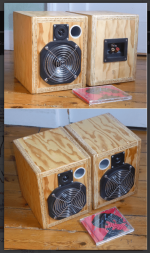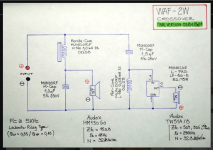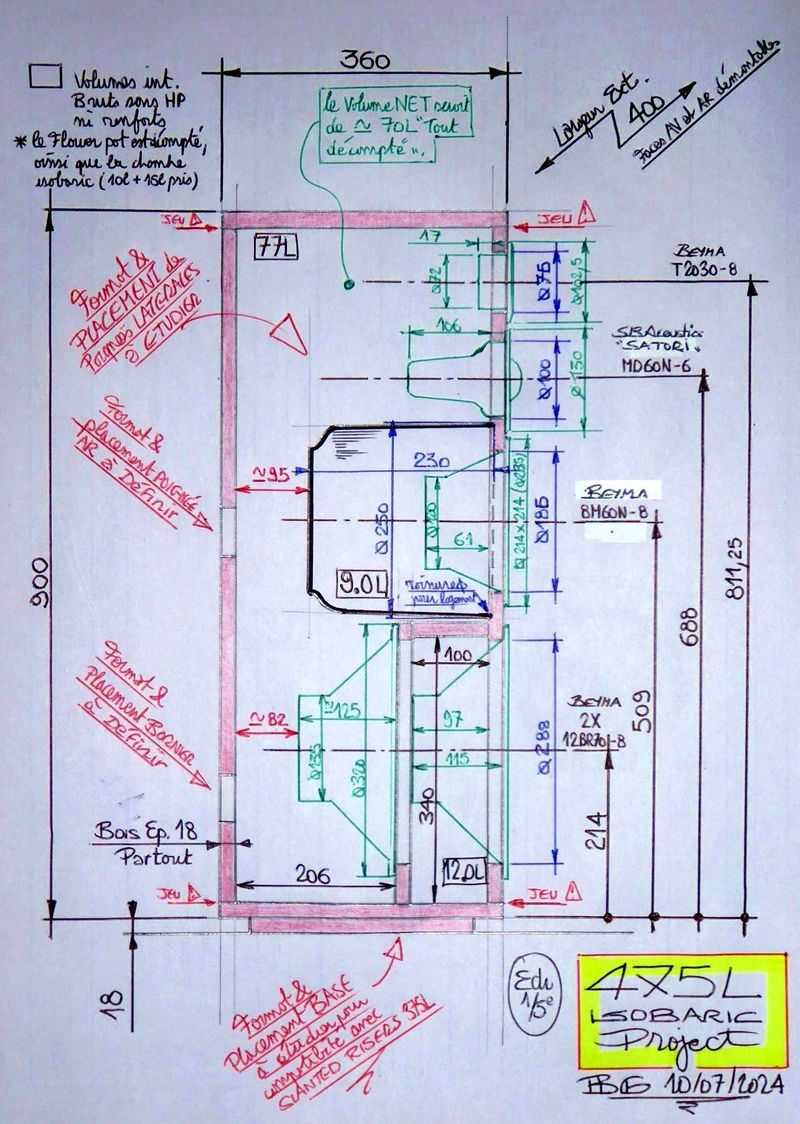This filter with changing slopes seems interesting but did it have really advantage against ordinary filters if counting drivers impedance curves with resonances and drivers current non-linearities?
It is interesting to simulate this filter with real driver data on Vituixcad.
You can do that simulation if you wish (or can ?) - I never simulated anything, to be honest... So I'd be interested if you have (unlike me) the means and the knowledge to operate VituixCad...
For the 3-ways version - according to the schematic in post #55 - the speakers are :
- Woofer = BEYMA 12B100R
- Midrange = BEYMA 8M60N
- Tweeter = BEYMA CP21/F
One of the advantages at least for the transients is that all speakers are in polarity : it means that all diaphragm will move in the same direction on the attacks.
You also have the minimum phase variation and group delay, like on a conventional 1st order crossover, plus "transitional slopes" 6-to-12dB/Oct, instead of 6dB/Oct. constant. No other "simple design" passive crossover offer this combination, and it's clearly audible.
Also, like on a 1st order crossover, the vertical directivity is critical, and you need to place your speakers accordingly (acoustic origin plane perpendicular to the listening axis, located between tweeter and midrange). This is the price to pay, that you avoid with higher orders, but it can be bypassed if you have a steady "sofa" listening position, like I do.
T
Last edited:
For my first diy project "HeilEve" (AMT/fiberglass-honeycomb TL) I had to choose between series and parallel first-order XO speakers (one of each). I played the same music segment twice in succession -- very quickly swapping L/R inputs to the amp -- and directly compared the two halves of the soundstage. Preferred the series side playing L/R both.
- One loudspeaker with the conventional crossover (12dB/Oct.), and the other with the 612SP crossover.
- A/B mono tests, and Stereo tests.
- L and R then R and L. (I mean : shift of the crossovers between the two enclosures).
The results were clearly at the advantage ot the 612SP : "lively against lifeless", if I can say so.
Amazing audible difference : if I did not tested it, I would not have believed it...
Funny that we're talking about series connection but it's not acoustical...
Been thinking about isobaric...
Each face of the membrane sees a different acoustic impedance ...
And now I can talk about the inside woofer that I found rubbing...
Woofers are not meant to be used that way...
Tang Band's last series of micro -subwoofers is described as using dual membrane (and spiders) in a sort of isobaric arrangement.
Probably is better to couple the two woofers symmetrically
I dunno...
Been thinking about isobaric...
Each face of the membrane sees a different acoustic impedance ...
And now I can talk about the inside woofer that I found rubbing...
Woofers are not meant to be used that way...
Tang Band's last series of micro -subwoofers is described as using dual membrane (and spiders) in a sort of isobaric arrangement.
Probably is better to couple the two woofers symmetrically
I dunno...
VituixCad is easy to use, more difficult is to get impedance and SPL magnitude (best with polar radiation 0-180 deg) for drivers as data files. If you have data files for this drivers, I can make simulation.You can do that simulation if you wish (or can ?) - I never simulated anything, to be honest... So I'd be interested if you have (unlike me) the means and the knowledge to operate VituixCad...
For the 3-ways version - according to the schematic in post #55 - the speakers are :
- Woofer = BEYMA 12B100R
- Midrange = BEYMA 8M60N
- Tweeter = BEYMA CP21/F
VituixCad is easy to use, more difficult is to get impedance and SPL magnitude (best with polar radiation 0-180 deg) for drivers as data files. If you have data files for this drivers, I can make simulation.
Thanks @kaameelis, but no : unfortunately, I do not have these data files... 😕
With my obsolete LspLAB (WXP) software, I used to measure the speakers, and do the simulations accordingly.
T
You can use free REW software for measuring drivers to get data files. Best if measurements are done in speaker enclosure you will use.
I owned Dynaudio C5 speakers.They used isobaric loading.They were Dynaudios flagship speakers from the late 90s/early 2000s.Great speakers but they are power hungry and only 85db sensitivity.
For my first diy project "HeilEve" (AMT/fiberglass-honeycomb TL) I had to choose between series and parallel first-order XO speakers (one of each). I played the same music segment twice in succession -- very quickly swapping L/R inputs to the amp -- and directly compared the two halves of the soundstage. Preferred the series side playing L/R both.
Yes. I also went that way for my smaller 2-ways enclosures : from 12dB/Oct. conventional to serial 6dB/Oct.
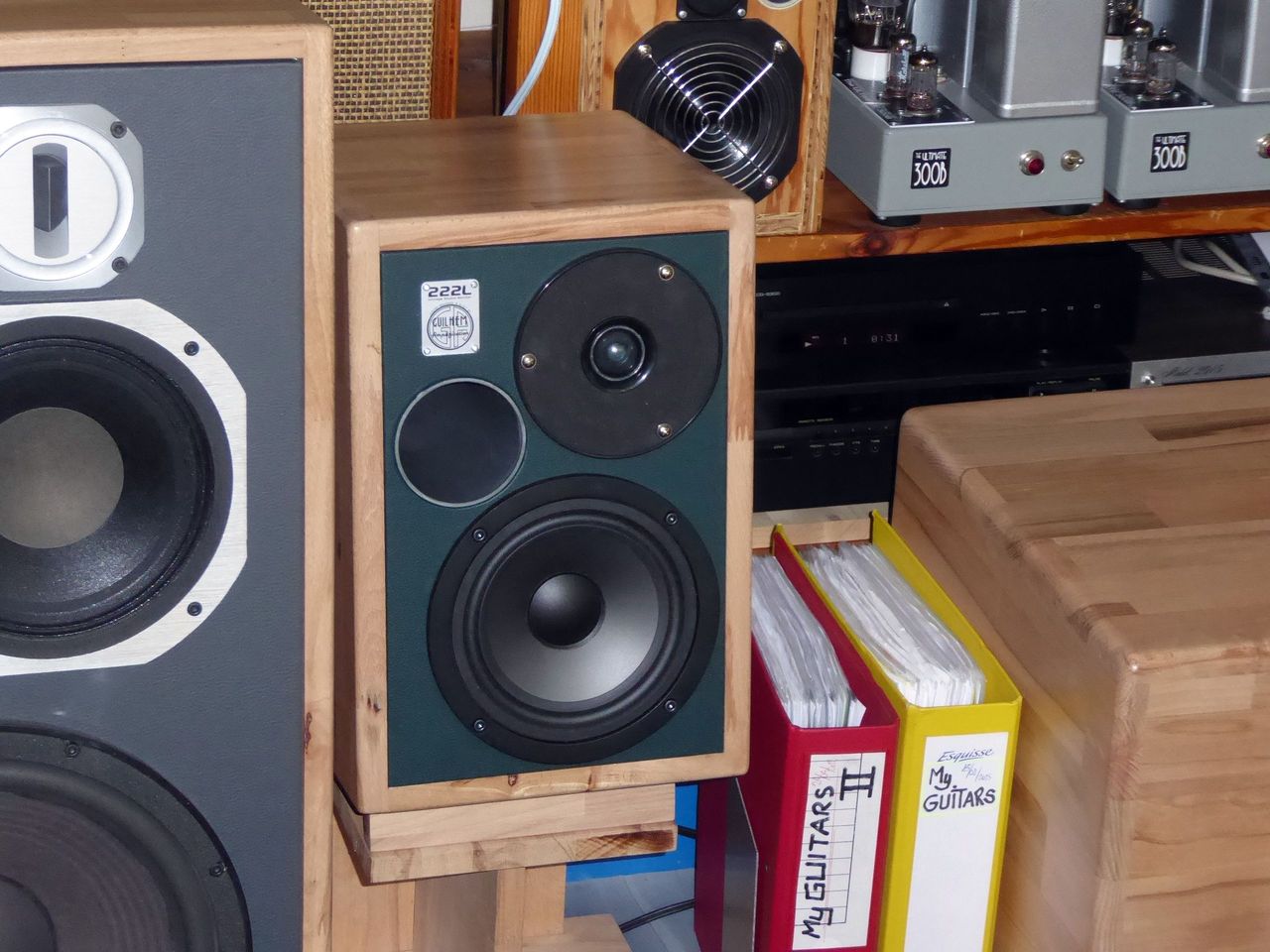
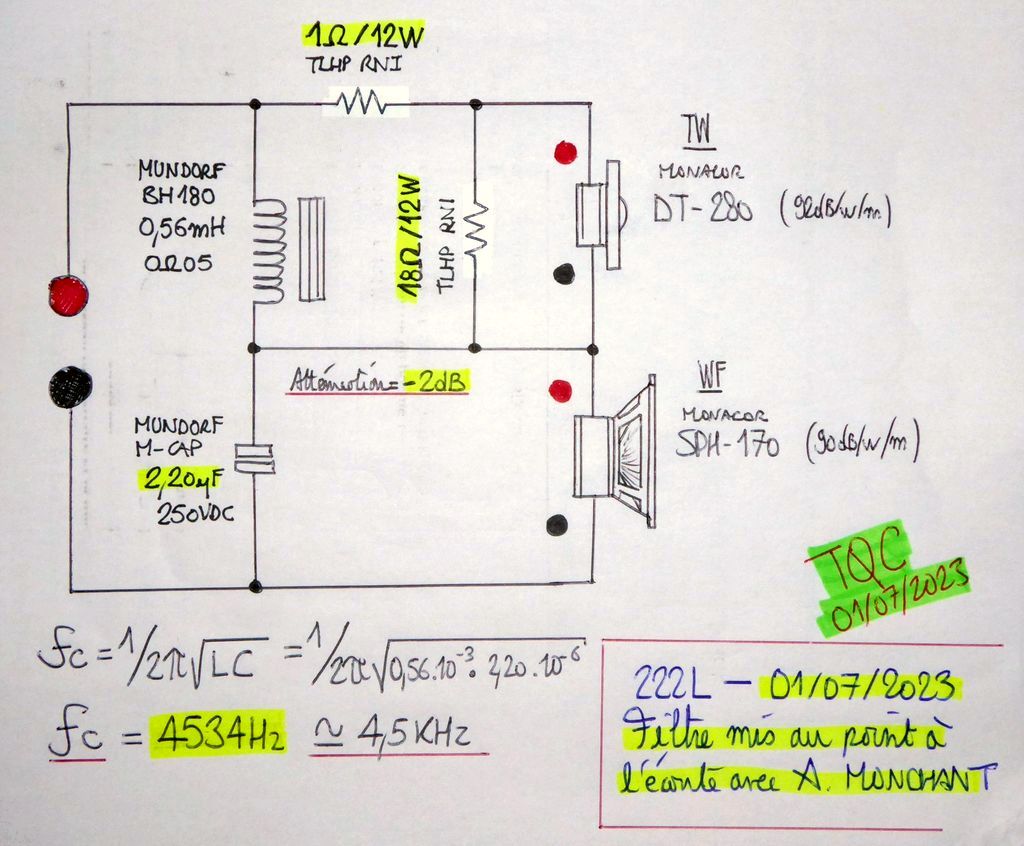
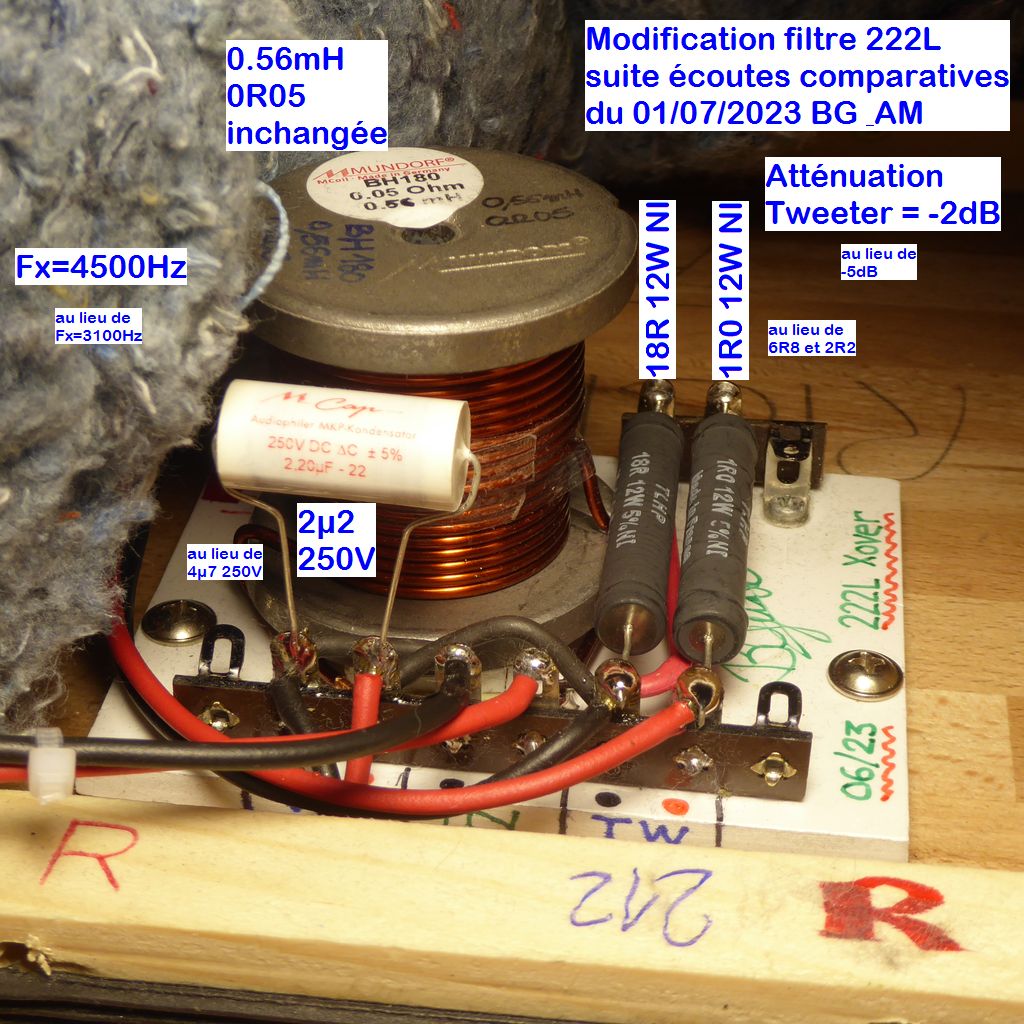
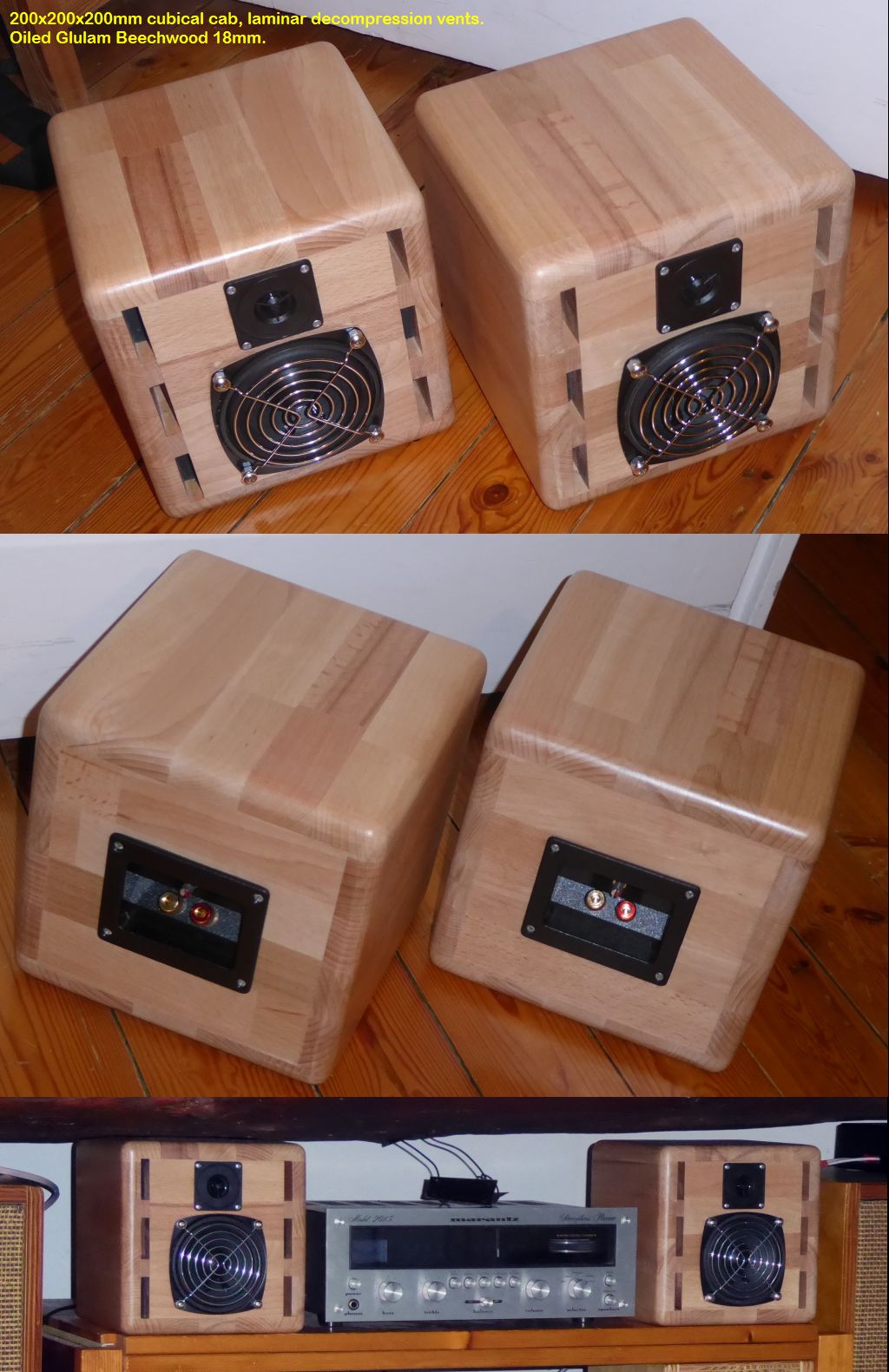
[
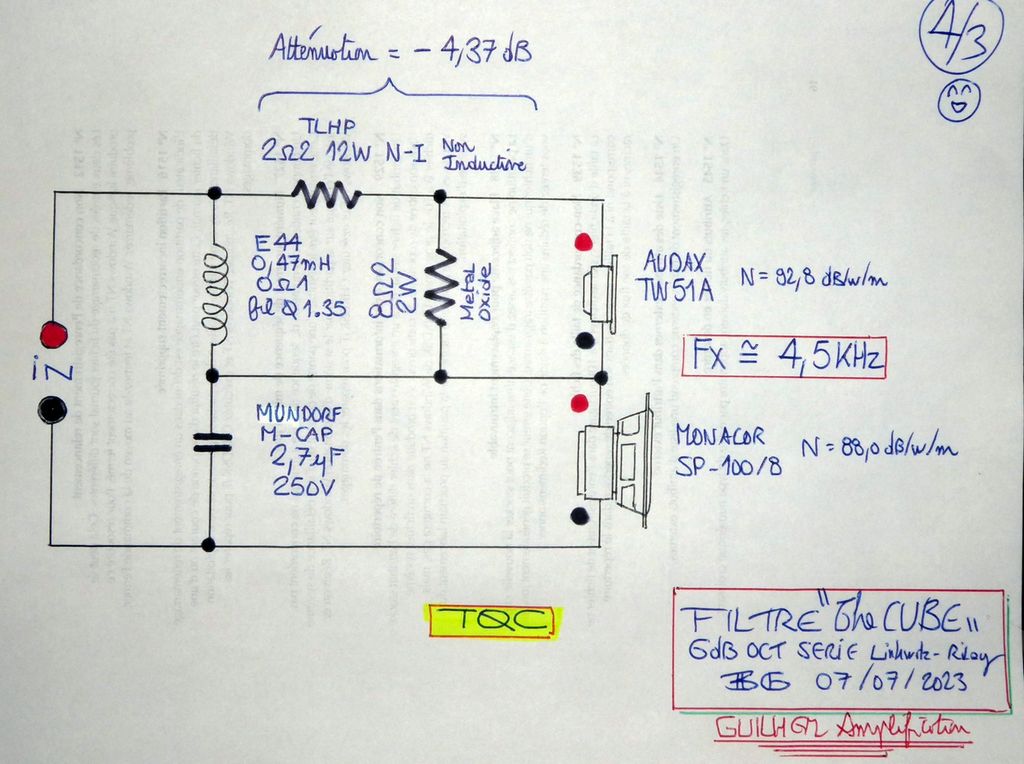
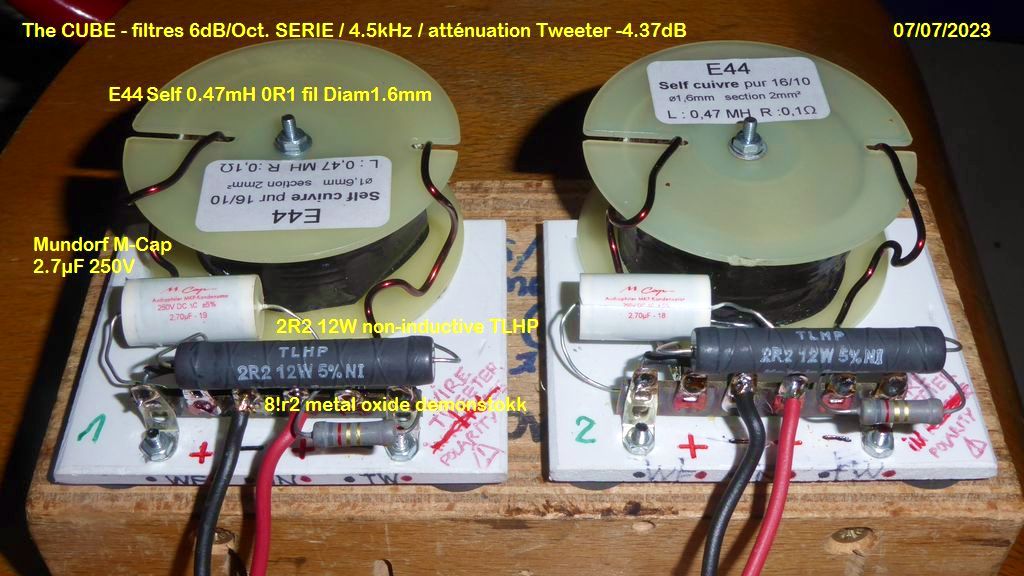
That said, it doesn't work with all speakers : thir linearity must be good around the chosen crossover transition frequency FC, or at least present no major flaws in the response.
Ideally the frequency overlap should be 2 octaves without accident in the response. This is nearly impossible to obtain with 2-ways enclosures, doable with 3-ways, easier with a 4-ways (hence my project).
W
Attachments
You can use free REW software for measuring drivers to get data files. Best if measurements are done in speaker enclosure you will use.
Yes ! I loaded REW and have to set it up with my sound card and DIY interface to do these measurements :
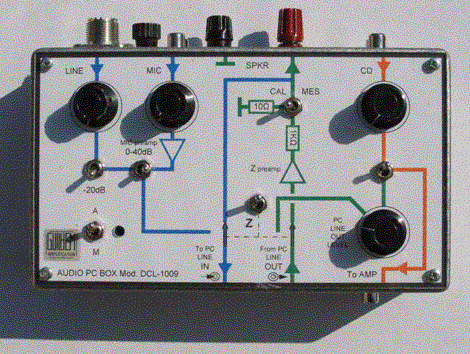
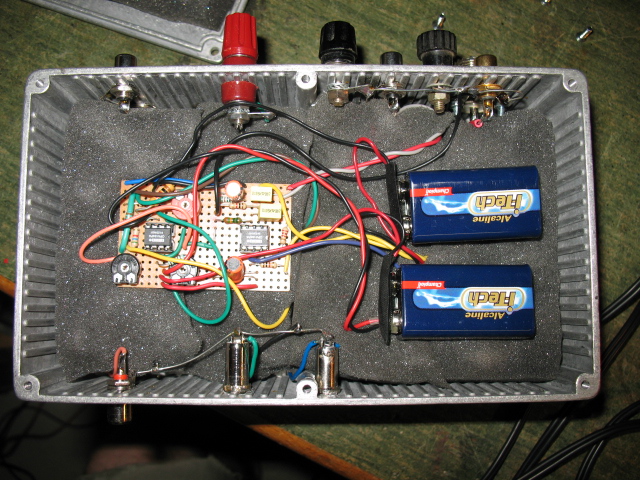
And yes, of course : build the enclosure and make the measurements outdoors, like I did in the past (usually by night 😉, for superior quietness) :
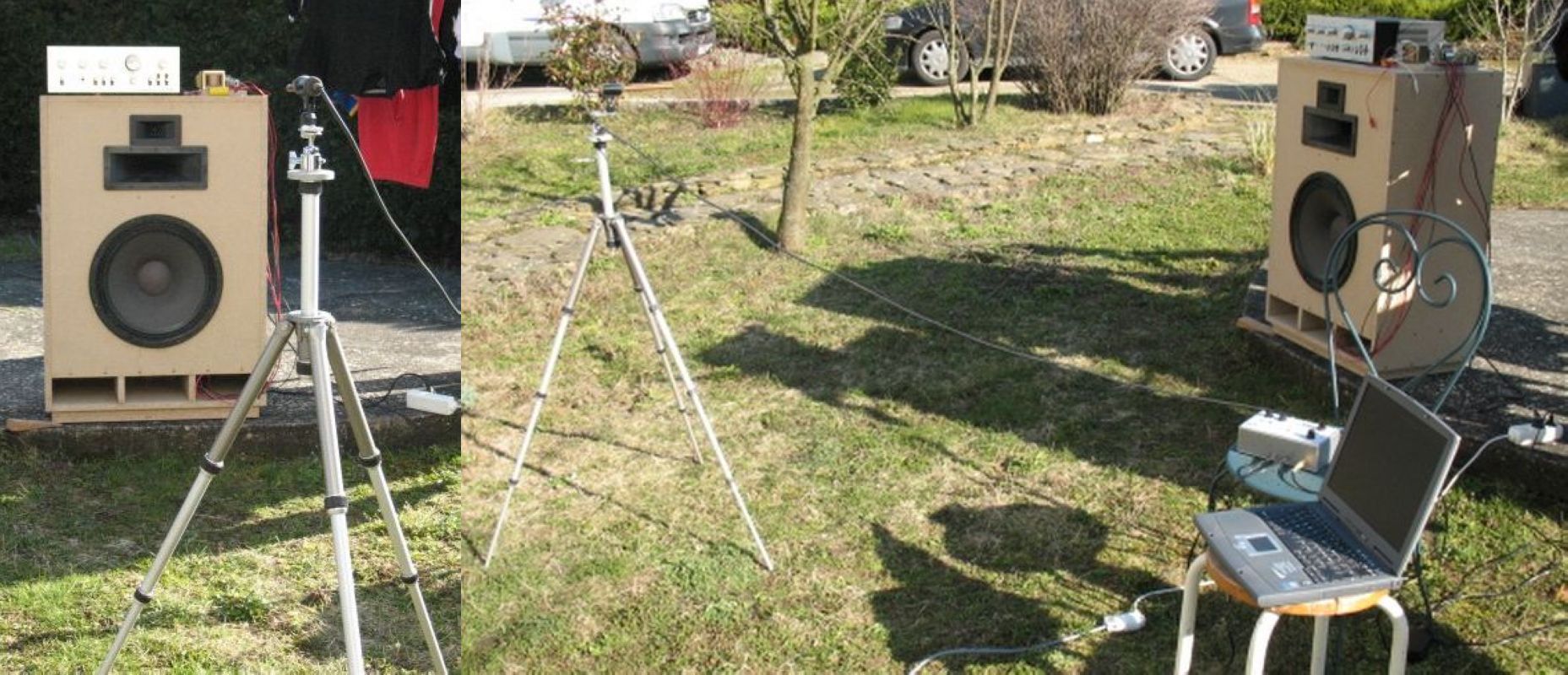
I also own an ARTA license. I'll see what can be done for VituixCad... Is it a freeware ?
I need to shake myself
 to rebuild a convenient, practical PC based Audio measurement rig !!!
to rebuild a convenient, practical PC based Audio measurement rig !!!T
"FlowerPot" Midrange closed cavity, made from recycled plastic resin 4mm thickness - capacity 9.2L allowing a F3 at 110Hz :


T
T
For drivers impedance measurements you need probably change the interface little according to this and use 2 inputs on sound card:Yes ! I loaded REW and have to set it up with my sound card and DIY interface to do these measurements :

https://www.roomeqwizard.com/help/help_en-GB/html/impedancemeasurement.html
For drivers impedance measurements you need probably change the interface little according to this and use 2 inputs on sound card:
https://www.roomeqwizard.com/help/help_en-GB/html/impedancemeasurement.html
Fine ! Thanks @kaamelis ! This will help to modify my setup... 😎 😎 😎
T
For testing I made simulation of 3-way series filter on Vituixcad with real driver SPL and impedance data.
It is not bad but difficult is get with drivers, what not have smooth SPL lines, good resulting SPL. One cause of problem is that filter is only first order and other is that one particular C or L value change affect at least 2 drivers response, so independent tuning is impossible.
Bass driver had only real impedance, SPL is taken as flat, mid and tweeter are simulated with full real data.
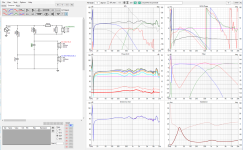
Little different parallel 2nd order filter give better results with same drivers.

It is not bad but difficult is get with drivers, what not have smooth SPL lines, good resulting SPL. One cause of problem is that filter is only first order and other is that one particular C or L value change affect at least 2 drivers response, so independent tuning is impossible.
Bass driver had only real impedance, SPL is taken as flat, mid and tweeter are simulated with full real data.

Little different parallel 2nd order filter give better results with same drivers.

Last edited:
Unfortunately @kaameelis, I do not have data files about any of my speakers, nor any means to obtain them - at least for the moment...
We would certainly have different results ! Notably concerning the polarity of the speakers... Among other.
On my 3-ways 375L enclosure, I attempted to shift the polarity of the midrange, like on your simulation. But it did not worked : transients were muddled, and the tone balance was lost, "scooped" if I can say so.
So all my speakers are de facto connected in same polarity, with the advantage that the transients are all of the same polarity, I mean : same positive or negative pulse throw for all speakers cones.
This is a good coincidence that the two factors tone balance and synchro transients met themselves here, certainly tied to the fact that the crossover FC (400Hz / 5000Hz) arose in regions of bandwidth where the linearity of the different speakers do not show peculiar accidents.
With FC at 300-400Hz / 3-4kHz / 7-8khz, I think (and hope) that a 4-Ways serial-parallel crossover should work fine too, each speaker operating in a suitable linear region, at least 1.5 to 2 Oct. accross each FC.
T
We would certainly have different results ! Notably concerning the polarity of the speakers... Among other.
On my 3-ways 375L enclosure, I attempted to shift the polarity of the midrange, like on your simulation. But it did not worked : transients were muddled, and the tone balance was lost, "scooped" if I can say so.
So all my speakers are de facto connected in same polarity, with the advantage that the transients are all of the same polarity, I mean : same positive or negative pulse throw for all speakers cones.
This is a good coincidence that the two factors tone balance and synchro transients met themselves here, certainly tied to the fact that the crossover FC (400Hz / 5000Hz) arose in regions of bandwidth where the linearity of the different speakers do not show peculiar accidents.
With FC at 300-400Hz / 3-4kHz / 7-8khz, I think (and hope) that a 4-Ways serial-parallel crossover should work fine too, each speaker operating in a suitable linear region, at least 1.5 to 2 Oct. accross each FC.
T
Serial filter can also work but for it is needed that all drivers have very smooth responses. If responses are not smooth, then in serial filter is nearly not possible to correct one driver response as correction will affect other driver response, what probably not need correction. Also first order filter did not left room for correction as 2nd and higher orders with filter Q adjustment give.
Specially I find problem with my test simulation in range where tweeter resonant frequency is, there serial filter will have real problem. On image range in red circle, there tweeter is not filtered as much needed and it can cause distortion because big cone amplitude.
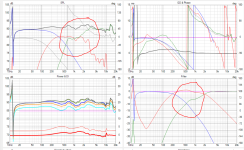
Specially I find problem with my test simulation in range where tweeter resonant frequency is, there serial filter will have real problem. On image range in red circle, there tweeter is not filtered as much needed and it can cause distortion because big cone amplitude.

Last edited:
Specially I find problem with my test simulation in range where tweeter resonant frequency is, there serial filter will have real problem. On image range in red circle, there tweeter is not filtered as much needed and it can cause distortion because big cone amplitude.
Yes, true. That's not surprising at all... The transision with the tweeter is always more deilcate, because it is a compromise between the treble extension of the Woofer and the resonance / low extension of the tweeter.
Thus, it is nearly impossible to achieve enough linear overlap (1.5 to 2 Oct. ) by lack of suitable linearity of the two speakers, which is necessary with 1st order crossovers (I mean : to benefit of their interesting advantages while minimizing their drawback)
That's one of the reasons why often Tweeter section of the crossover is 2nd, 3rd or 4th order, while the Woofer can work with only 1st order or 2nd order.
That's also the reason why I experiment this 4-ways enclosure, using a High-Midrange dome speaker (SB Acoustics MD60N-6) to "fill the gap" - if I can say so - between the Low-Midrange and the Tweeter. This will allow me more extended linear unaccidented overlap between the 2 speakers, and therefore meet better the 1.5 to 2 Oct. recovery condition, as required for the 6dB/Oct crossovers.
The serial-parallel configuration offers a 6 to 12dB/Oct. asymptotic slope tendency, while the serie or parallel only stick to 6dB/Oct. slope. This goes in the right direction for my needs...
T
My one suggestion would be to sell off the Beyma 12’s and go hybrid active so you don’t have to worry about efficiency matching the low bass……get a Dayton RSS315-4 and power it with a Hypex plate amp. You’ll have DSP control to tailor the bass response to your room…..something you CANNOT DO passively. I’d also consider a modular build…..you already know my opinion on that. This as a single box will be very heavy and clunky to move around not to mention the hard work required to dampen those long panels.
My one suggestion would be to sell off the Beyma 12’s and go hybrid active so you don’t have to worry about efficiency matching the low bass……get a Dayton RSS315-4 and power it with a Hypex plate amp. You’ll have DSP control to tailor the bass response to your room…..something you CANNOT DO passively. I’d also consider a modular build…..you already know my opinion on that. This as a single box will be very heavy and clunky to move around not to mention the hard work required to dampen those long panels.
Well, I still want to stay passive - even if I know the virtues of active multi amplification plus DSP and its drawbacks too, that I observe on many of my audio friends systems who went that route.
My little but dedicated Auditorium is of the near-field listening type, and I fortunately do not have problems of resonances or bass responses to solve - unlike most of my friends with their large but untouchable resonant living-rooms, forcing them to use a DSP with unfrotunately mixed (not to say questionable) results, I must confess... This doesn't really encourages me to mess with more complexity than necessary.
And yes : I prefer to stay somewhat "Old School"... 😉
About large enclosure transportation : this is barely planned by enclosure DIYers 🤔... Below, my personal solution to the problem : integrated handles placed at the gravity centre... And suddenly, handling and carrying becomes much easier !
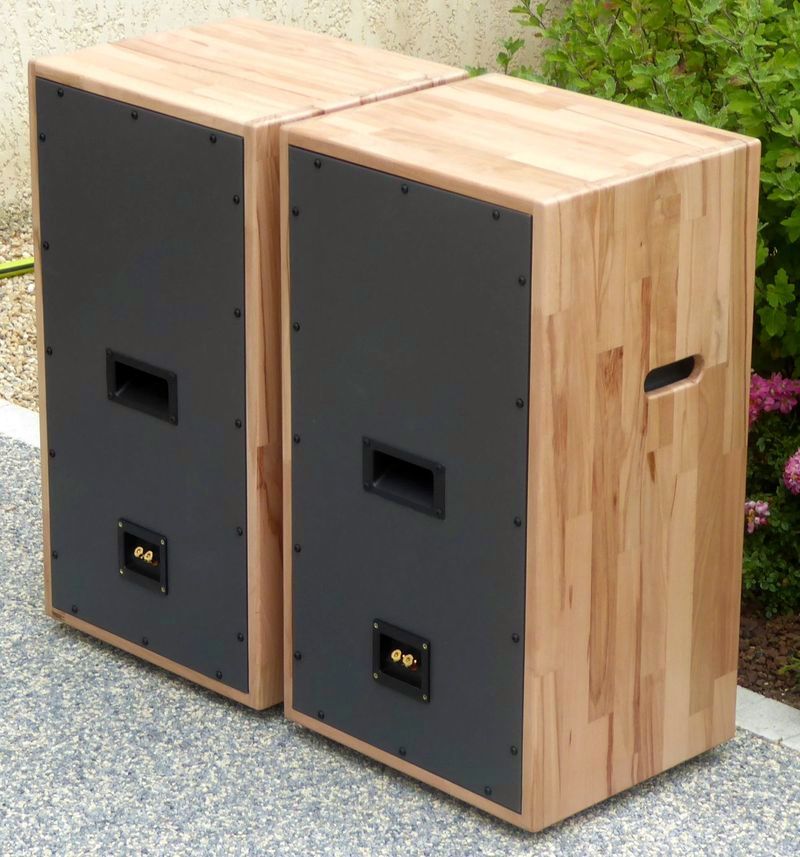
So I will repeat that trick on my present 4-ways project.
About the mass : my 375L weight 30.0kg each, in working order. For a HxWxD at 750x420x360mm enclosure made from 18mm Beech hardwood glulam, including internal bracing / filling / crossover, etc. I think that it stays reasonable vs. the damping of the panels.
Of course, you can always do better, and rent a forklift to carry your speakers. Sorry, not for me ! 😆😉
T
- Home
- Loudspeakers
- Multi-Way
- ISOBARIC sealed enclosure... Any experiences? Any advantages?
